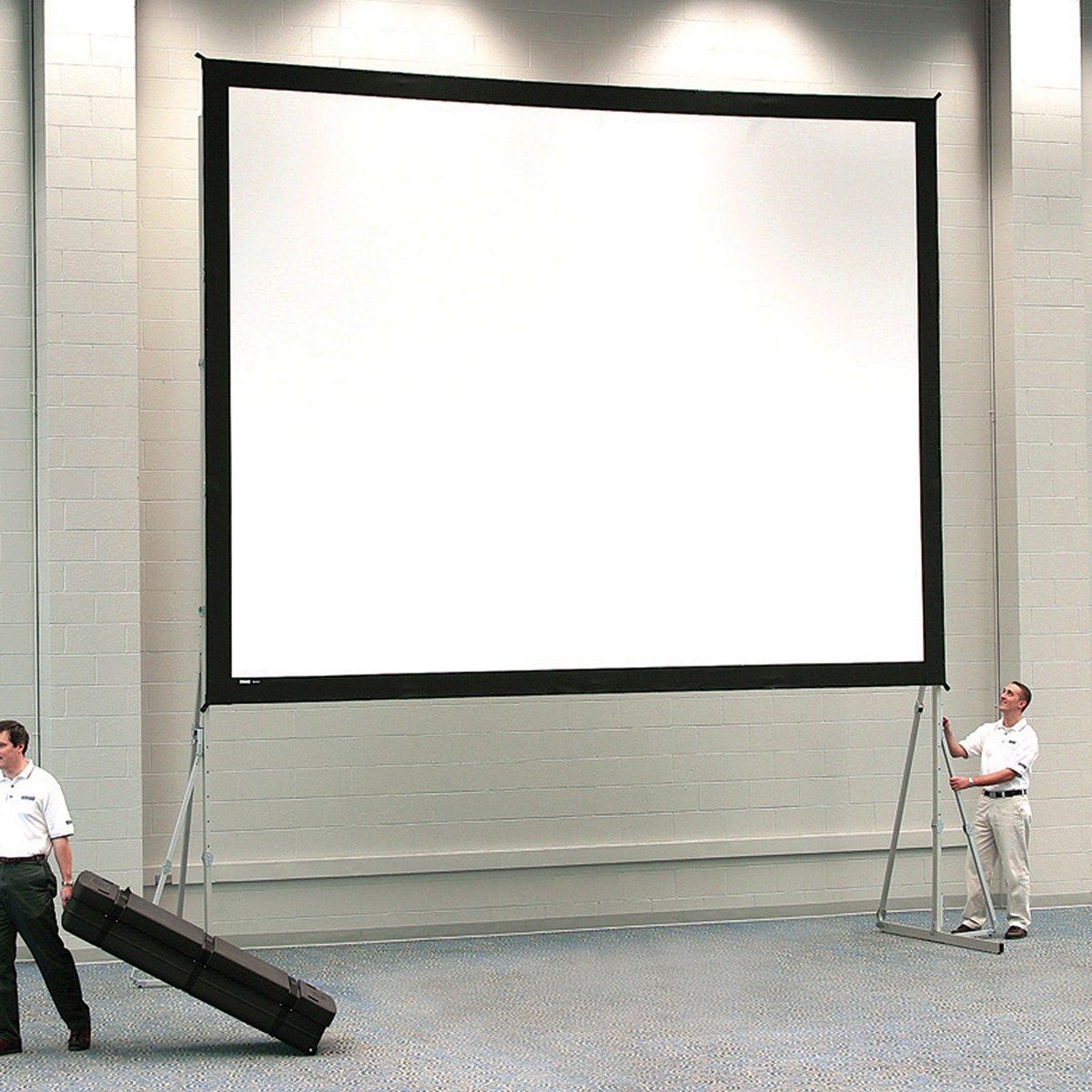When choosing projector screens for schools and corporate environments, there are a few factors to consider for optimal viewing experiences:
- Screen size: Determine the appropriate screen size based on the viewing distance, the number of people using the screen, and where the viewers will be in the room. Consider the room dimensions and seating arrangements to select a screen size that provides clear visibility to all viewers.
- Aspect ratio: Choose a screen with the appropriate aspect ratio to match the projector and displayed content. A few common aspect ratios in projector screens include 4:3 (standard) and 16:9 (widescreen). Ensure compatibility between the projector’s native resolution and the screen’s aspect ratio.
- Screen gain: Screen gain refers to the amount of light reflected to the viewers. A higher gain screen reflects more light, resulting in a brighter image but narrower viewing angles. A higher gain screen can be beneficial in environments with controlled ambient light. A lower gain screen with wider viewing angles might be more suitable for spaces with more ambient light.
- Screen material: Consider the screen material’s characteristics, such as its texture, colour reproduction, and ability to diffuse light evenly. Matte white screens are commonly used as they provide good colour reproduction and diffuse light well, resulting in a wide viewing angle.
- Aftercare and support: Buy your projector screen from reputable AV retailers like KPMS to receive aftercare and support when necessary. Our experts are the best people to help with any problems.



